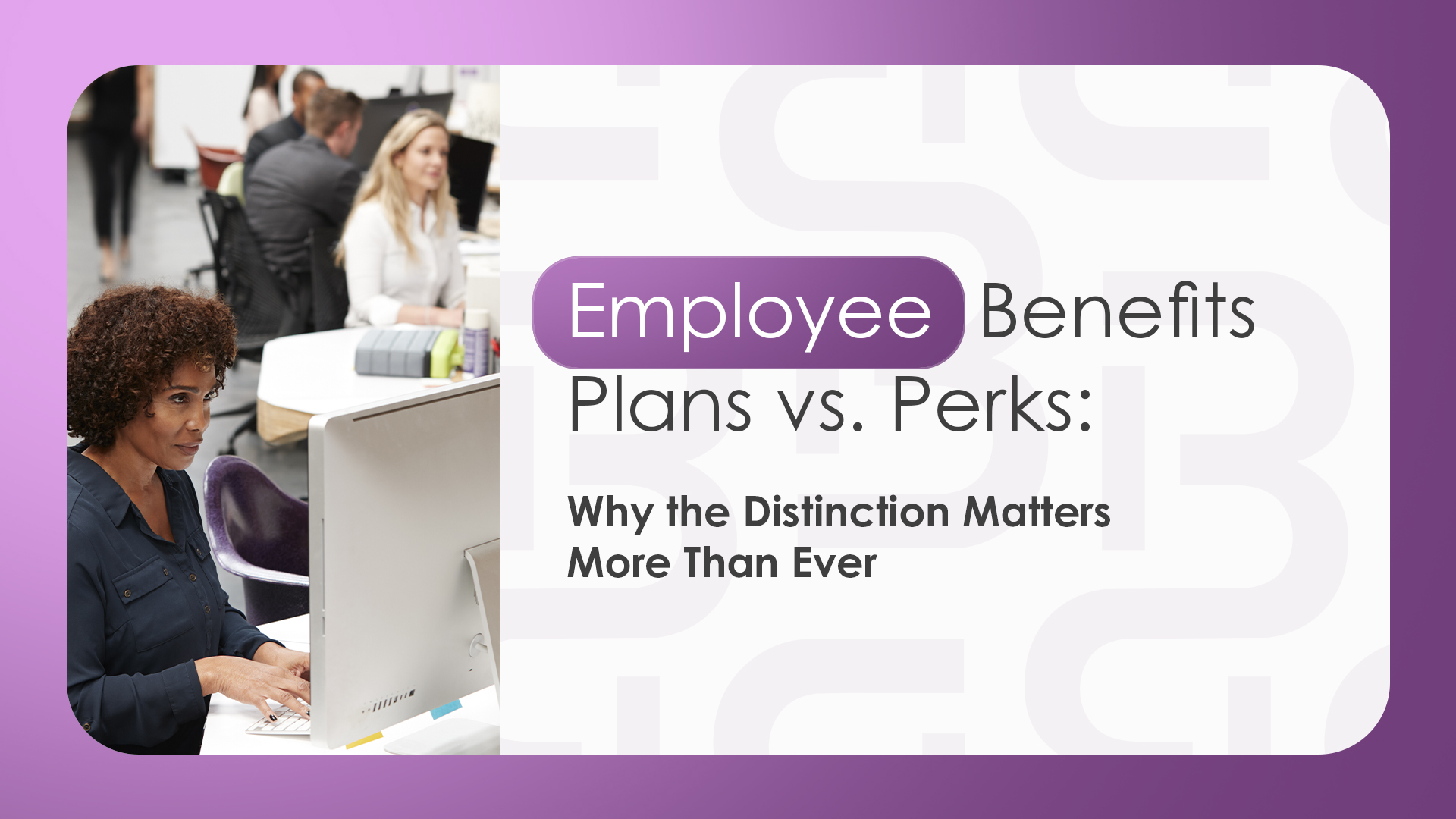In today’s workplace, the terms employee benefits and perks are often used interchangeably—but they’re not the same thing. As employers look to attract and retain top talent in a changing labor market, understanding the difference isn’t just helpful—it’s essential.
This distinction goes beyond semantics. It shapes employee expectations, impacts compliance, and affects your bottom line. So, let’s break it down.
What Are Employee Benefits Plans?
Employee benefits plans are formal programs that provide non-wage compensation to employees. These plans are typically structured, long-term in nature, and often governed by employment standards or insurance regulations. They form the foundation of a company’s total compensation offering and may include:
- Health and dental insurance
- Life and disability coverage
- Paid time off (vacation, sick leave, parental leave)
- Employee assistance programs (EAPs)
- Employee savings plans or group retirement programs
It’s important to note that some benefits are mandatory under employment law—such as certain types of paid leave or minimum statutory health coverage—while others, like employee savings plans, are voluntary enhancements offered by employers to support financial well-being and long-term retention.
In Canada, for instance, many voluntary benefits—such as retirement contributions or wellness stipends—are delivered through group insurance plans or registered savings accounts and reflect a company’s broader commitment to supporting employees beyond the minimum requirements.
What Are Perks?
Perks, on the other hand, are non-essential, non-contractual add-ons designed to enhance the employee experience. They’re often introduced as a way to reflect company culture, boost morale, and differentiate from competitors. Examples include:
- Free snacks or lunches
- Gym memberships or wellness stipends
- Office happy hours or team outings
- Flexible Fridays or birthday leave
- Pet-friendly workspaces
Unlike formal benefits plans, perks are not legally required or insured. They can be adjusted or withdrawn more easily and are often used as low-cost ways to create a positive work environment.
Why the Difference Matters in 2025
With rising costs, remote work norms, and a renewed focus on mental and financial health, employees are becoming more discerning. They no longer confuse perks with true protection.
Here’s why understanding and clearly communicating the difference between benefits and perks is more important than ever:
- Recruitment: Serious Candidates Look for Serious Support
Job seekers are increasingly savvy. While perks can make an employer seem fun or modern, high-quality candidates—especially those mid-career or with dependents—are scanning job descriptions for robust, reliable benefits packages.
A fully funded health plan, RRSP matching, or access to virtual mental health support carries far more weight than ping-pong tables and catered lunches. Candidates want to know: How will this company support me long-term?
- Retention: Perks Won’t Help in a Crisis
Perks may brighten the day-to-day, but when employees face real life challenges—illness, injury, parental leave, or financial hardship—it’s your employee benefits plan that makes the difference.
Organizations that invest in strong benefits see lower turnover, higher morale, and improved loyalty. It signals a deeper commitment to employee well-being—not just workplace “vibes.”
- Compliance and Cost Management
Employee benefits are subject to regulations and often include shared premiums between employer and employee. They require careful plan design, compliance with provincial/federal law, and ongoing governance.
Perks don’t. But that flexibility can be a double-edged sword. When perks are marketed as benefits—but then removed—it can lead to disappointment, reputational damage, or worse, legal risk if promises are unclear.
Benefits, while more complex to manage, also create predictability in budgeting, and many employers leverage group buying power to control costs without compromising coverage.
- The Mental Health Imperative
As mental health continues to dominate conversations around employee well-being, employers must go beyond surface-level support. Meditation apps and yoga classes (perks) are great—but without access to therapy, medication, or EAPs (benefits), their impact is limited.
Employees expect real access to care—not just the appearance of care. And benefits plans are where that access is defined.
The Role of Perks—Still Valuable, But Not Foundational
None of this means perks aren’t important. In fact, they can be incredibly powerful—especially when thoughtfully tied to your company culture.
Used strategically, perks:
- Reinforce your brand values
- Boost day-to-day morale
- Differentiate your organization in competitive hiring markets
But they should never replace—or be confused with—core benefits. Think of it this way: benefits are the safety net; perks are the sprinkles on top. Both can improve the employee experience—but only one can protect it.
How to Communicate the Difference to Employees
Clear communication is key. Too often, perks are promoted as part of a “benefits package,” leading to confusion and disappointment.
Here’s how to separate the two effectively:
- Use accurate language in job postings and onboarding materials
- List core benefits first, and frame perks as cultural enhancements
- Survey employees to find out which perks actually add value
- Highlight your investment in formal benefits—especially if they go above and beyond the norm
- Transparency builds trust, and trust builds engagement.
Conclusion: Build the Foundation, Then Layer the Experience
In a modern workplace, it’s tempting to lead with perks. But perks don’t support employees through a diagnosis, help them plan for retirement, or ensure access to care in times of crisis. That’s what employee benefits plans are for.
At Benchmark Benefits, we specialize in building strategic employee benefits programs that go beyond surface-level perks. Our work is grounded in helping organizations create thoughtful, compliant, and people-first solutions that reflect their values and support long-term goals. We partner with employers to design benefits plans that align with company culture, reinforce equity, and deliver real value to employees. From plan design and benchmarking to communications, compliance, and governance, we offer the expertise and structure needed to manage benefits with confidence.
Because perks might attract talent— But benefits are what keep them. Contact us today!








